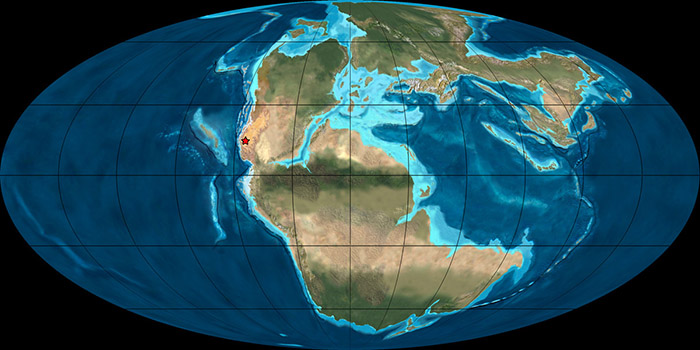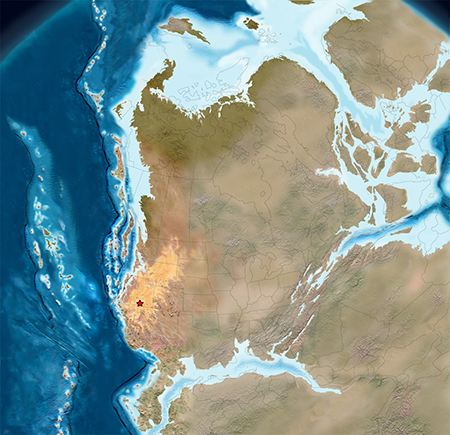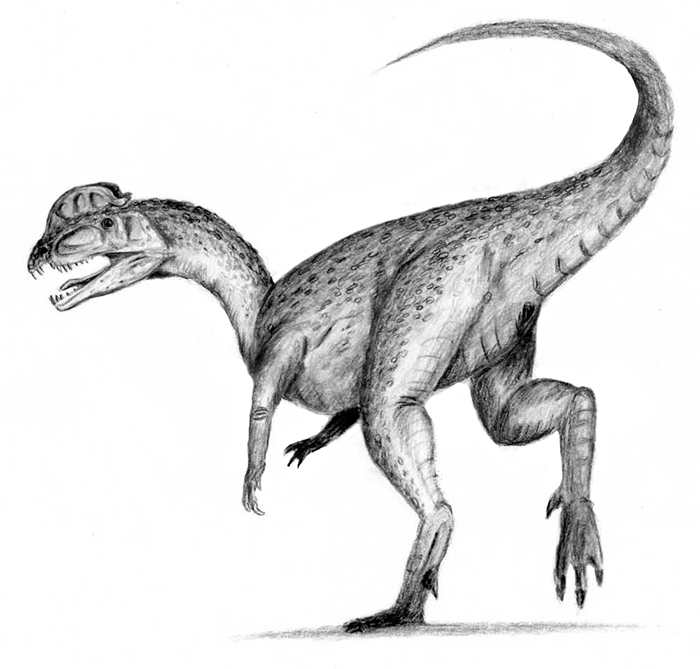
Map of Continents Through Time

Time in History: 190 million years ago (Early Jurassic Period)
Environment Parameters & Graphs of Carbon & Oxygen
|
 |
Question of the Day:
Why were Dinosaurs such successful organisms?
Key Concepts
Dispatch

We can’t say exactly where we were, but the hill sure was tall, and for two hours the youth ambassadors scrambled skyward, the layers of rock unfolding as much in front of their face as under their feet. It was the final stretch of their daily run, and the climb was a very literal experience for the group, who were asked that day to contemplate the rise of the dinosaurs.
They were not always a dominant species, but 200 million years ago another extinction event hit the earth. Many species were wiped out, but it was the dinosaurs that survived. They climbed to the top of the food chain, and they dominated the landscape. The ambassador’s climb finished on a lightly treed plateau, rock created 190 million years ago. Back then; this spot was a desert. Today, the ambassador’s final steps were into the prints of a giant. Dinosaur tracks pressed into the earth. Each foot was as wide as a cowboy hat, and clearly visible as if the 20 foot dinosaur had run by minutes before.
This was only the beginning of their dominance of this landscape. In the days to come the ambassadors will travel land with more fossils and prints representing the full impact of this gigantic species. They will watch their rise, all the while aware that the fall will come, just as every cliff climbed is one where you have to get back down.
| Daily Video | Expert Video |
|---|---|
Photos of the Day
Coming Soon!
Character of the Day: Dilophosaurus 
Dilophosaurus was a moderate-sized dinosaur that was found in the area of the Grand Staircase Escalante National Monument about 190 million years ago. Dilophosaurus grew to about 7 meters (23 ft.) long and may have weighed 500 to 1,000 kilograms (1,100 to 2,200 lb.). Dilophosaurus were carnivores that ran on two feet (theropod dinosaurs). It is now thought that dinosaurs ultimately had a huge competitive advantage over both mammals and crocodiles because they were over 10 times more efficient at absorbing oxygen than either of those rivals. In the low oxygen atmosphere of the Mesozoic this was an important edge. Even so, being first into available niches is a strong advantage (think of it as the home court advantage), so the crocodilian’s reign was ended only by another extinction at the end of the Triassic that left the dinosaurs undisputed rulers of terra firma.
To learn more about Dilophosaurus and the Early Jurassic click below:
http://www.ucmp.berkeley.edu/dilophosaur/intro.html
http://palaeos.com/mesozoic/jurassic/earlyjura.html
http://animal.discovery.com/dinosaurs/triassic-and-early-jurassic-periods.htm
http://paleobiology.si.edu/geotime/main/jurassic1.html
Youth Ambassador Activity
 Yesterday when you arrived here at the first campsite you saw the transition from the Permian to the Triassic era, and you saw all the marine life and fossils there, and then in the rock after that they were largely gone, because of the Permian-Triassic mass extinction.
Yesterday when you arrived here at the first campsite you saw the transition from the Permian to the Triassic era, and you saw all the marine life and fossils there, and then in the rock after that they were largely gone, because of the Permian-Triassic mass extinction.
Today you’re running into the era of the crocodiles. Where you will arrive later today at the end of your run it will be 40 million years later, 215 million years ago, in the Triassic period. At this time lots of little dinosaurs began to appear but they were not dominant; really it was the crocodiles that took over. Today as you run I want you to consider the arrival of this dominant species of crocodiles, because later in the day we will be examining fossils and comparing the relative amounts and sizes of crocodiles versus dinosaurs found in the geological record. Lastly, for every step you take today, take a step back in your mind as well. In addition to looking at fossils, we will be answering another fundamental question in geology: How do you tell the age of a rock?